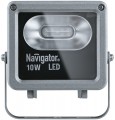Luminous flux
The luminous flux, nominally given out by the lamp (in models with replaceable bulbs — when using lamps of maximum power).
The
higher the value of the light flux, the brighter the glow will be, the farther the lamp will turn out and the easier it will be for it to cover a vast space (at the same lighting angles). However, the number of lumens is a rather specific parameter and is rarely required in fact, mainly for special purposes. It is easier for many to evaluate the capabilities of a lamp using special tables in which the luminous flux is related to the overall brightness of light, lighting range, etc. Here is one of the simplest tables — luminous flux values for the most popular incandescent lamps:
— a 40 W lamp produces approximately 370 lm;
— 60 W — 550 lm;
— 75 W — 800 lm;
— 100 W — 1200 lm;
— 150 W — 1900 lm;
— 200 W — 2700 lm.
That is, for example, if an LED lamp produces 1800 lumens, its capabilities approximately correspond to a 150-watt light bulb. In everyday life, it is often easier to evaluate the brightness of fixtures in this way.
Note that the principle “the more the better” in the case of brightness is not always applicable. And the point here is not only in energy consumption: too bright light can be uncomfortable, and even harmful to the eyes.
Colour temperature
The colour temperature of the light emitted by the luminaire when using a standard lamp. Note that this parameter is most often indicated for LED models (see "Light source"): it is LEDs that can differ markedly in colour temperature, but among halogen lamps and incandescent lamps, noticeable differences from the general norm are extremely rare.
According to this indicator, you can evaluate the colour of the glow in warm, or, conversely, cold tones. Note that an increase in colour temperature shifts the colour towards cold, bluish colours. So, neutral white light has a colour temperature of
3500 – 4500 K, lower values correspond to the
warm light of incandescent lamps, and the highest values \u200b\u200bfound in modern lamps reach
6500 K — this is a pronounced bluish tint.
The choice of colour temperature depends primarily on the personal preferences of the user, as well as design considerations.
Illumination angle
The angle of illumination provided by the luminaire, in other words, the size of the sector in which the luminous flux diverges.
With the same power and type of light source (see above), a wider angle of illumination allows you to cover more space, but the brightness (and, therefore, the overall efficiency) of the illumination is reduced. A narrower angle, in turn, limits the illuminated space, but the brightness and "range" of the lamp are higher. Accordingly, the choice for this parameter depends on what is more important — a concentrated stream of light or a wide coverage.
Specifying lighting angles is customary for models that illuminate the sector less
than 180 °. There are also more wide-angle products — for example, lampposts and many garden bollards (see "Type") are capable of covering a full 360°; however, for them, the angle of illumination is not given — it is obvious from the design. And in the most narrowly focused modern lamps, this indicator is about 30 – 40 °; these are, usually, spotlights designed for special purposes (for example, decorative or security lighting).
Number of LEDs
The number of LEDs provided in the design of the corresponding luminaire (see "Light source"). Note that this parameter is indicated only for models built on the basis of a non-removable LED block and not using standard socles (see above) for replaceable lamps (in the latter case, the number of lamps is indicated).
Theoretically, numerous LEDs contributes to the high power and brightness of the lamp. However, different models of LEDs can differ in power and luminous flux at times, or even orders of magnitude; therefore, in fact, a single-diode lamp can be much more powerful and brighter than a "repeated" one. But what this indicator directly affects is reliability and fault tolerance: the more LEDs, the less the performance of each of them affects the operation of the lamp, the more LEDs can fail without a noticeable effect on efficiency.
Power source
The power supply voltage used to power the spotlight or lamp.
Most of the lighting equipment is powered by a standard
230 V household power supply. There are also spotlights designed for lower voltage:
3.7 V,
12 V,
24 V. Low-voltage built-in spotlights are placed in furniture, walls, on the ceiling, in the floor or in the ground (decorative products ). To power electric lamps in high risk areas and in especially dangerous areas, a voltage of not more than 50 V is allowed, and if there is a possibility of electric shock, not more than 12 V. Wiring for low supply voltage circuits is less demanding in relation to deploying 230 V circuits .

